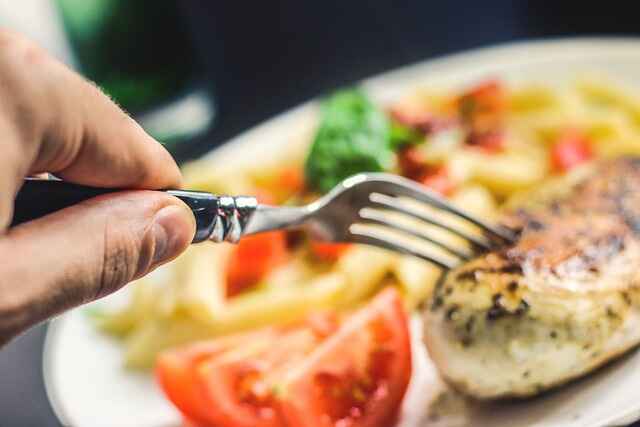What is GER?
Gastroesophageal reflux (GER), often known as reflux, occurs when stomach acid and food travel back up into the esophagus. This generates a burning sensation in the chest, which is commonly referred to as heartburn.
GER can affect adults, children, and even babies. It’s natural, and most children with gastroesophageal reflux outgrow it. Dietary changes can assist, but some children may require medicinal treatment.
Reflux that occurs frequently and causes difficulties such as poor growth, vomiting, or esophageal injury is referred to as GERD (gastroesophageal reflux disease). GERD is a more serious condition that is usually managed with medication.
Also, Read Complete Guide on Dementia: Causes, Symptoms, and Care Tips
Causes
The lower esophageal sphincter is a band of muscle that divides the esophagus from the stomach. If this ring relaxes or doesn’t shut properly, GER symptoms can occur. As a result, stomach acid can leak backward into the esophagus, the back of the throat, and occasionally out of the mouth or nose.
Reflux is frequently insignificant and not a problem. However, reflux occurs more frequently and creates audible discomfort in those with GERD. They frequently have heartburn (also known as acid indigestion) after eating.
Symptoms
Reflux symptoms frequently include:
- Burning in the chest, throat, and neck is known as heartburn. It typically gets worse after meals and when lying down, lasting up to two hours.
- recurring hiccups
- Spitting up or vomiting frequently, especially after meals, the sensation of stomach acid coming up into the back of the throat, acidic or unpleasant breath
- cavities occur frequently, particularly in the rear teeth

Risk Factors
Consistent reflux of stomach acid into the esophagus can result in:
- breathing difficulties (if fluid enters the trachea, lungs, or nose)
- redness and irritation in the esophagus (esophagitis) bleeding in the esophagus scar tissue in the esophagus, which can make swallowing difficult pneumonia frequent asthma attacks
Diagnosis
Reflux is typically diagnosed in older children by examination and discussion of symptoms. Try to keep track of the foods that seem to trigger your child’s GER symptoms. This can aid the physician in understanding what is going on.
Doctors may do the following tests on infants and younger children to identify GER or rule out other issues:
- Upper GI radiology study: This particular X-ray can reveal any issues with the upper digestive tract, inflammation or narrowing of the esophagus, and fluids backing into the esophagus. Your youngster will ingest a small amount of a liquid that looks like chalk for the test. This liquid can be seen on an X-ray and represents the swallowing motion.
- 24-hour impedance-ph probe study: The best technique to identify reflux and how frequently it occurs is in this way. Through the nose, a small, flexible tube is inserted into the esophagus. To measure the amount of acid in the esophagus and find any reflux, the tip rests just above the esophageal sphincter for 24 hours.
- Milk scans: These X-ray images follow a particular liquid as it is ingested by a toddler. The scans can reveal whether the stomach empties liquids slowly and whether the liquid refluxes into the lungs.
- Upper endoscopy: A tiny fiber-optic camera is used by doctors to view the esophagus, stomach, and a portion of the small intestine. To rule out or identify additional issues, they may also extract a little tissue sample (a biopsy) from the lining of the esophagus.
Treatment
There are various therapy options available if you have GER. However, a proper diagnosis and personalized treatment plan require consultation with a healthcare expert. Here are some common GER treatment strategies:
- Antacids: By neutralizing stomach acid, they can provide immediate relief. They are most effective for occasional minor symptoms.
- Blockers of H2: Histamine when compared to antacids, H2-receptor blockers reduce stomach acid production and provide longer-lasting comfort.
- PPIs (proton pump inhibitors): They are more potent than H2 blockers and can effectively reduce acid production. They are often used to treat more severe or chronic GER.
- Prescription Drugs: Your doctor may prescribe stronger drugs, such as higher-dose PPIs or prokinetics, which help improve the movement of the digestive tract, if OTC medications are insufficient to manage GER symptoms.
- Surgery: Sometimes, if alternative therapies for GER do not work or if complications occur, surgical procedures may be taken into account. Laparoscopic fundoplication, which involves wrapping the upper portion of the stomach around the lower esophageal sphincter to fortify it and stop reflux, is the most popular surgical treatment for GER.
Diet
- Avoid Trigger Foods like meals that are really seasoned and spicy, oily or fatty foods
- Avoid acidic foods and drinks (such as tomatoes, orange juice, and citrus fruits)
- Limit or Avoid Some Drinks like caffeinated drinks, Alcohol
- Eat lean foods like fish, chicken, and turkey
- Avoid red meat cuts with a lot of fat.
- Pick whole grains like whole wheat bread, quinoa, brown rice, and oats.
- Stay clear of fried and high-fat foods.
- Choose fruits such as bananas, apples, pears, and melons.
- Acidic fruits such as oranges, grapefruits, and tomatoes should be avoided.
- Green beans, broccoli, carrots, and potatoes are non-acidic vegetables that are often popular.
- Tomatoes, onions, garlic, and other potentially harmful veggies should be avoided.
- Dairy products with low or no fat are recommended. Lactose-free or plant-based milk replacements may be preferable for some persons.
- Cook using olive oil or canola oil in little amounts. High-fat and fried foods should be avoided.
- Eating smaller, more frequent meals can help relieve stomach strain and prevent overeating, which can cause reflux.
- Staying hydrated with simple water can aid in the diluting of stomach acid.

Precautions
- Avoid trigger foods
- Eat smaller meals
- Avoid late-night eating
- Limit alcohol and caffeine
- Maintain a healthy weight
- Quit smoking
- Avoid lying down after meals
- Avoid tight-fitting clothing, especially around the waist
- Loosen belts and avoid wearing clothing that is too tight around the stomach.
- Find healthy strategies to cope with stress, such as exercise, yoga, meditation, or participating in hobbies you enjoy.
Also, Read Say No to Tobacco: Top 10 Reasons to Quit Smoking – Part 2





